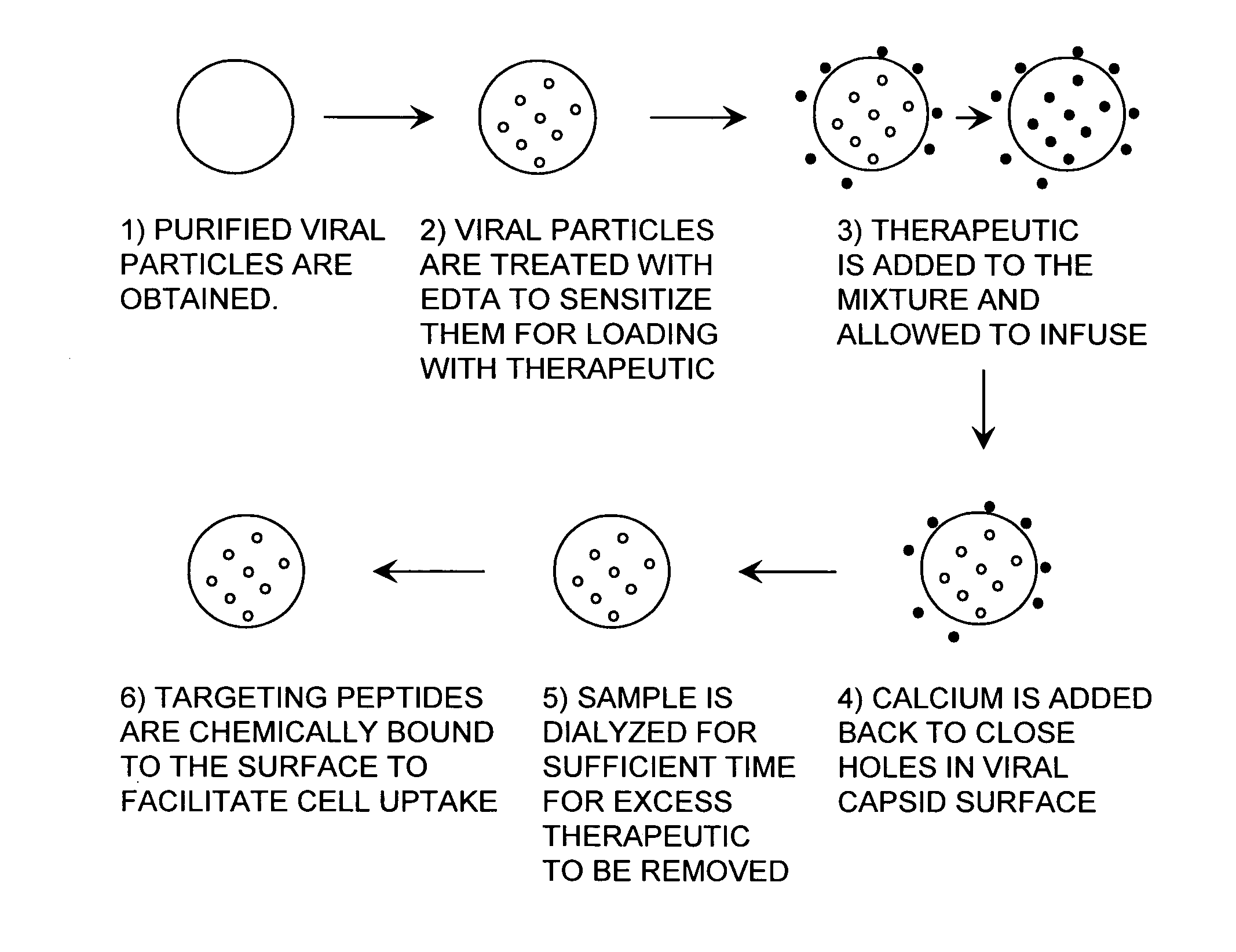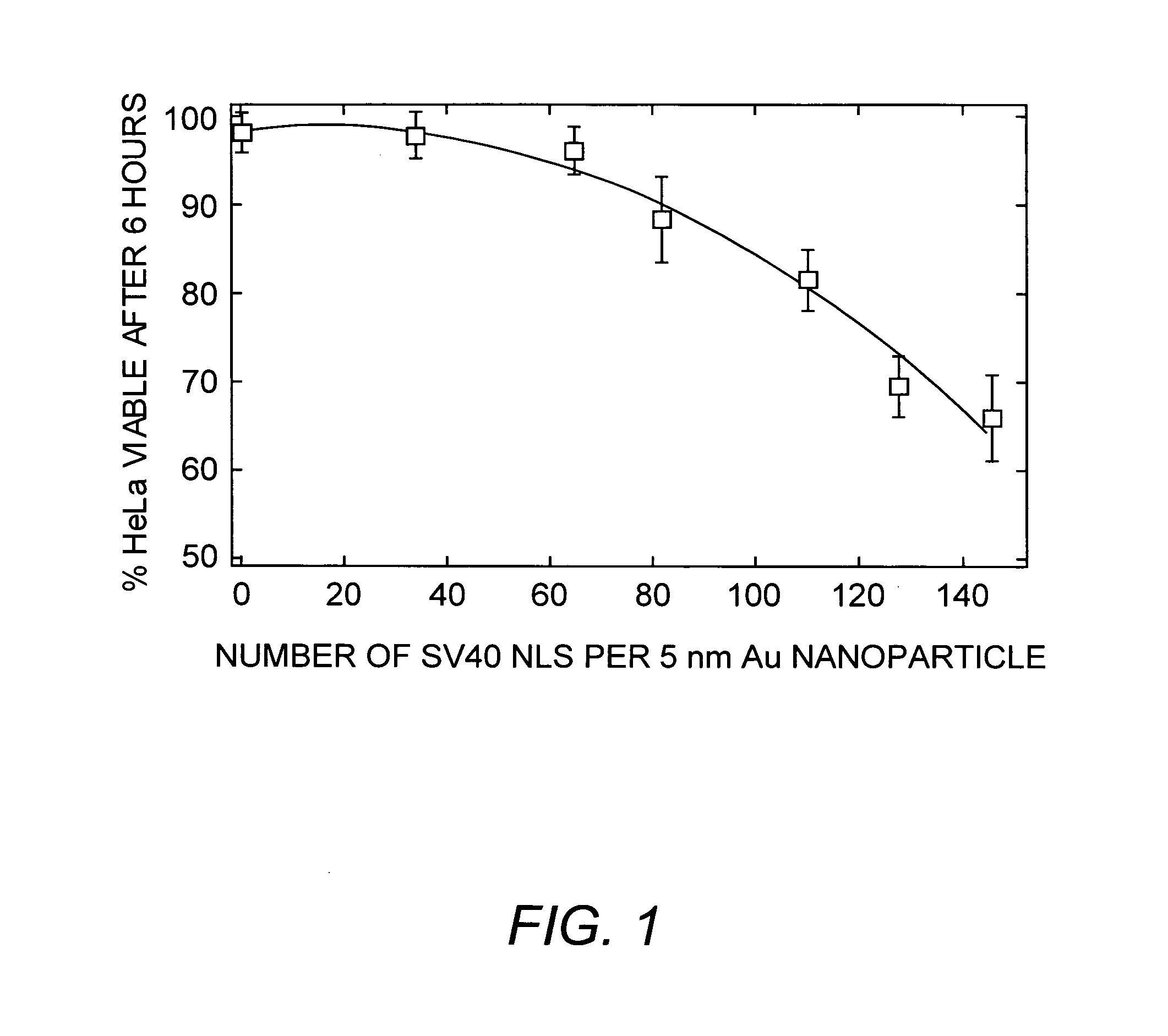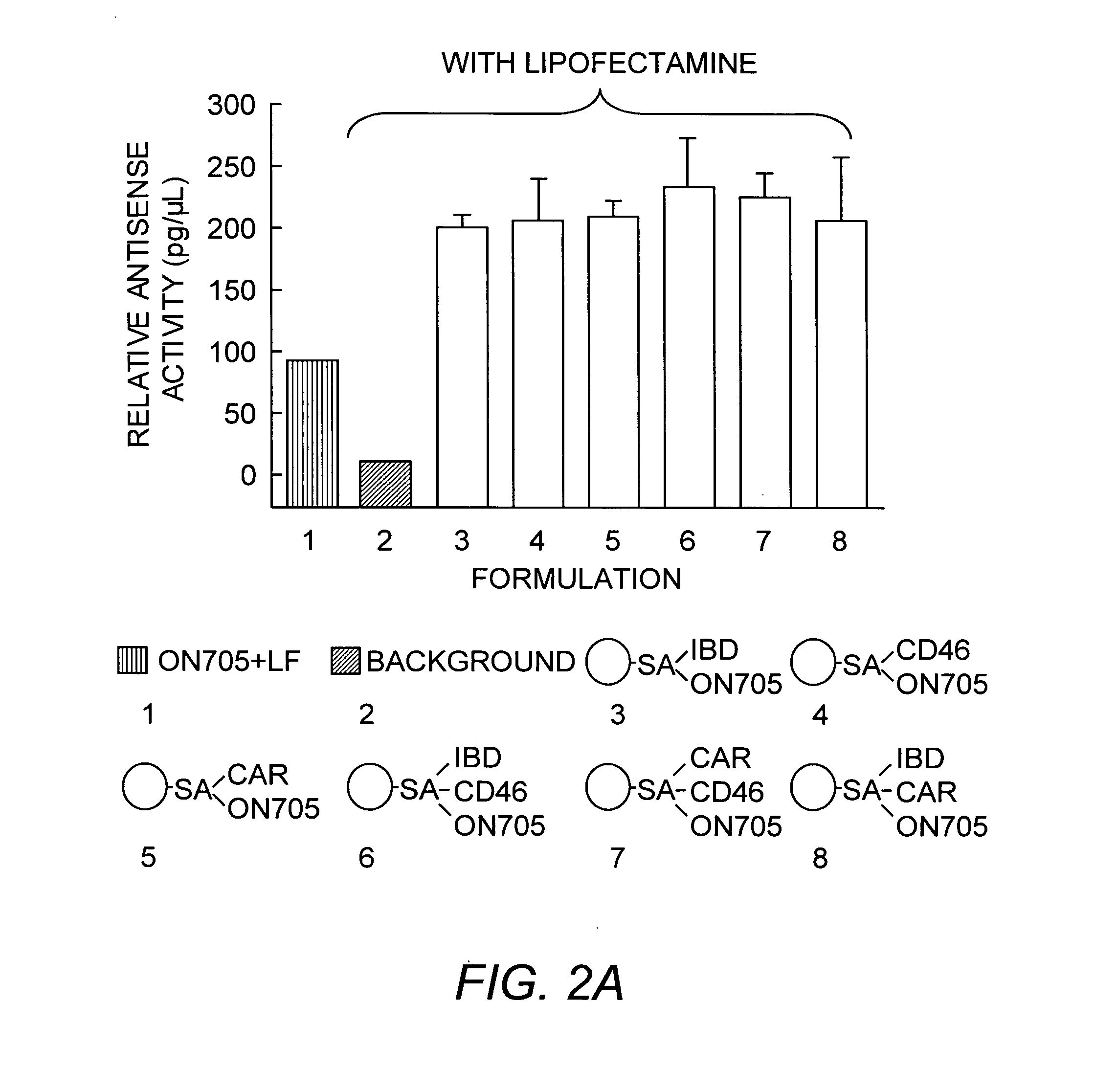Viral nanoparticle cell-targeted delivery platform
a delivery platform and nanoparticle technology, applied in the field of nuclear targeting, can solve the problems of few, if any, targeted delivery strategies that can overcome multi-drug resistance, and the drug is not approved for any virus-based therapeutic agen
- Summary
- Abstract
- Description
- Claims
- Application Information
AI Technical Summary
Benefits of technology
Problems solved by technology
Method used
Image
Examples
example 1
[0106]To avoid lengthy descriptions of the composition of plant viral capsids, a nomenclature for the reagents was created. The abbreviation PVN, plant virus nanoparticle, refers to RCNMV when it is used in the context of a targeted drug delivery nanoparticle. PVNs are engineered, modified, and / or infused with cargo in a variety of combinations. The abbreviations are summarized in Table 1. For example, when DOX or any small molecule is infused into the PVN, its acronym is added to the left of the PVN designation, i.e., DOX-PVN (FIG. 8). For example, if a CD46 targeting peptide is chemically attached to the exterior, its acronym is added to the right of the PVN designation, i.e., the construct is a PVN-CD46. Finally, for example, if a fluorophore such as fluorescein (F) is used as a label on the peptide the construct is designated PVN-CD46-F. Although Fluorescein is referred to, a more stable fluorophore, Alexa Fluor 633 is used. A multifunctional nanoparticle has more th...
example 2
Molecular Infusion into Viral Capsids
[0116]Molecular infusion was tested using three dyes, RHO (positive charge), luminarosine (neutral) and fluorescein (negative charge), which were infused into opened virions (200 mM EDTA, pH 8). The PVN was exposed to a dye concentration 1000-fold higher than that of the PVN. After an incubation period, the PVNs were closed by addition of Ca2+ and Mg2+ combined with a titration to pH 7. Following dialysis, the fluorescence of the PVN samples was lowered to near background levels. Our data show that the dyes internalized in the virion are self-quenched. The self-quenching of dyes is well-known in the analogous experiment in liposomes where dyes are captured inside. The PVN samples were then reopened using 200 mM EDTA at pH 8, and the dyes were released. The PVN dye loaded was determined to be 90, 76 and 1 molecules, respectively, for the three dyes quantified by comparison with a fluorescence standard curve for each dye. While some of the infused ...
example 3
Internalization of PVNs Requires a Surface-Attached Targeting Peptide
[0118]We have observed that PVNs with targeting peptides attached to the surface can be internalized into mammalian cells. Native RCNMV was conjugated with fluorescein (F)-labeled targeting peptides: CAR-F, CD46-F and IBD-F. The peptides contained a terminal cysteine that was conjugated to the surface-exposed lysine residues on the RCNMV CP P-domains by means of the heterobifunctional linker molecule, succinimidyl-4-(N-maleimidomethyl)cyclohexane-1-carboxylate linker (SMCC). The formulations created are PVN-CAR-F, PVN-CD46-F and PVN-IBDF (see Example 1 and Table 1). The fluorescent labels served to monitor both the peptide coverage on the PVN surface and the uptake of PVNs by cells. Surface coverage can be determined in a fluorometer using a fluorescein standard curve to quantify the number of fluorophores in the sample and the UV-vis spectrum to quantify the concentration of RCNMV. Based on the measured fluorescen...
PUM
| Property | Measurement | Unit |
|---|---|---|
| Stokes radius | aaaaa | aaaaa |
| Stokes radius | aaaaa | aaaaa |
| Stokes radius | aaaaa | aaaaa |
Abstract
Description
Claims
Application Information
 Login to View More
Login to View More - R&D
- Intellectual Property
- Life Sciences
- Materials
- Tech Scout
- Unparalleled Data Quality
- Higher Quality Content
- 60% Fewer Hallucinations
Browse by: Latest US Patents, China's latest patents, Technical Efficacy Thesaurus, Application Domain, Technology Topic, Popular Technical Reports.
© 2025 PatSnap. All rights reserved.Legal|Privacy policy|Modern Slavery Act Transparency Statement|Sitemap|About US| Contact US: help@patsnap.com



